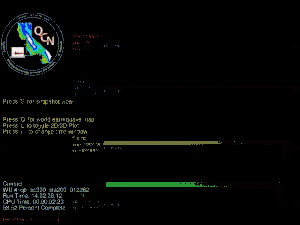 Quake-Catcher Network screensaver | |
| Platform | BOINC |
|---|---|
The Quake-Catcher Network was an initiative run by the University of Southern California that aimed to use computer-based accelerometers to detect earthquakes.[1] It used the BOINC volunteer computing platform (a form of distributed computing, similar to SETI@home).
It supported mobile devices (smartphones and some tablets/laptops) that have a built-in accelerometer.[2] It also supported three external USB devices - the codemercs.com JoyWarrior 24F8, the ONavi sensor, and the MotionNode Accel.[3]
In 2011, project scientist Elizabeth Cochran was awarded a Presidential Early Career Award from US President Barack Obama in large part due to her founding of the Quake-Catcher Network project.[4]
The Quake Catcher Network project started at Stanford University[2] in 2008,[5] then moved to Caltech,[6] and joined the Southern California Earthquake Center (SCEC) and the Incorporated Research Institutions for Seismology (IRIS) in 2016.[7] The Quake-Catcher Network was discontinued on June 1st 2023[8]
References
- ↑ "Main project page". University of Southern California. Archived from the original on 2016-11-02. Retrieved 2018-08-10.
- 1 2 "Introduction to the Network". University of Southern California. Archived from the original on 2016-11-04. Retrieved 2018-08-10.
- ↑ "Sensor Comparison". University of Southern California. Archived from the original on 2018-01-07. Retrieved 2018-08-10.
- ↑ "Elizabeth Cochran accepts the Presidential Early Career Award for Scientists". UCR Today. Archived from the original on 2016-12-24. Retrieved 2018-08-10.
- ↑ "152 | CitizenScience.gov". www.citizenscience.gov. Retrieved 2023-01-11.
- ↑ "Quake Catcher Network". Archived from the original on 18 June 2019. Retrieved 10 January 2023.
- ↑ "QCN Moves to SCEC/IRIS". 7 July 2016. Archived from the original on 30 August 2018. Retrieved 10 January 2023.
- ↑ "Quakecatcher". quakecatcher.net. Retrieved 2023-06-26.
External links